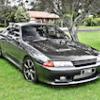Engine Noise
Announcements
-
Similar Content
-
Latest Posts
-
RS Four doesn’t mean it has Hicas, by old RS 4 didn’t have it. It was an optional extra. just stick your head underneath and look
-
By thomasLait · Posted
Hi everyone, I own a 2001 Nissan stagea nm35 with the VQ25DET, and I'm just trying to figure out if it's the 250T RS FOUR V (hicas) or the 250T RX FOUR (IRS Type) I have no owners manual and the vehicle is de-badged, does anyone know how to identify the difference, I briefly looked it up and I seen no difference. -
Yeah the hybrid you mean one of these? https://youtu.be/kL518ThmzSw?t=118 Yes that one that only vents is that i post above( GReddy FV2) right? That FV2 has some type of screw/valve where you can control how "hard" the spring would...but i think even on the hardest it would not be "good"...i would need to restrict this "more"...i consider this 🙂 And car should be ok(or rather same) with this like with no BoV?





Recommended Posts
Create an account or sign in to comment
You need to be a member in order to leave a comment
Create an account
Sign up for a new account in our community. It's easy!
Register a new accountSign in
Already have an account? Sign in here.
Sign In Now